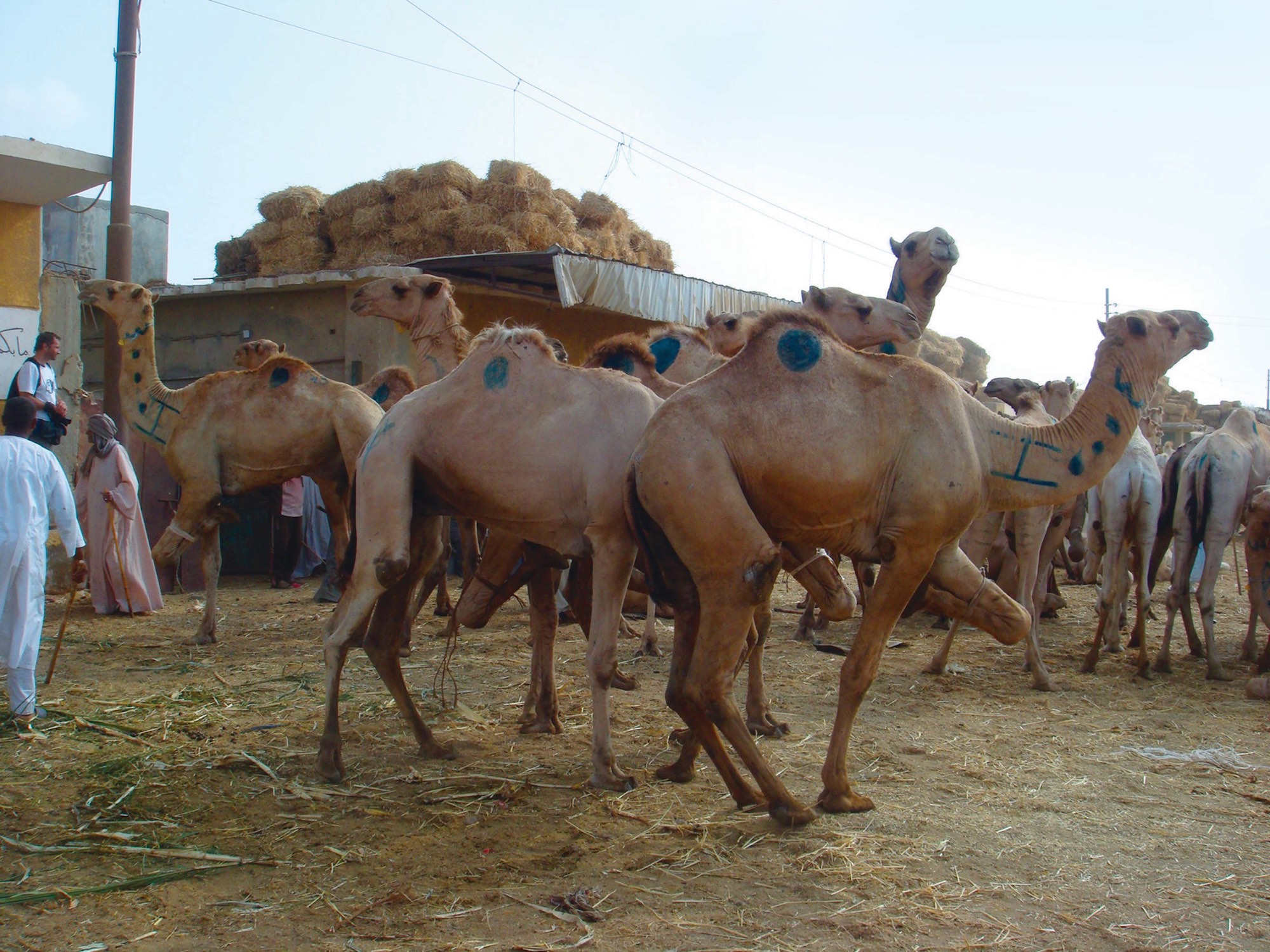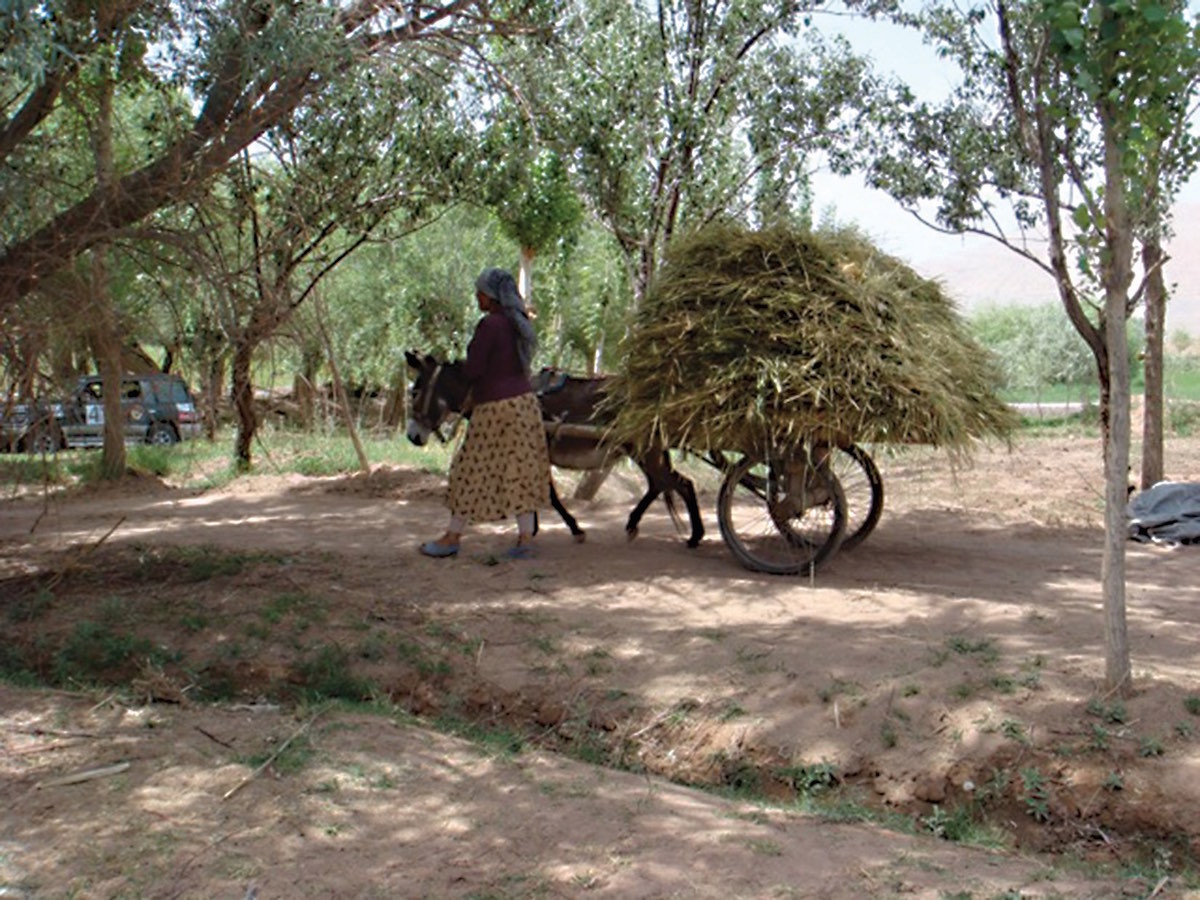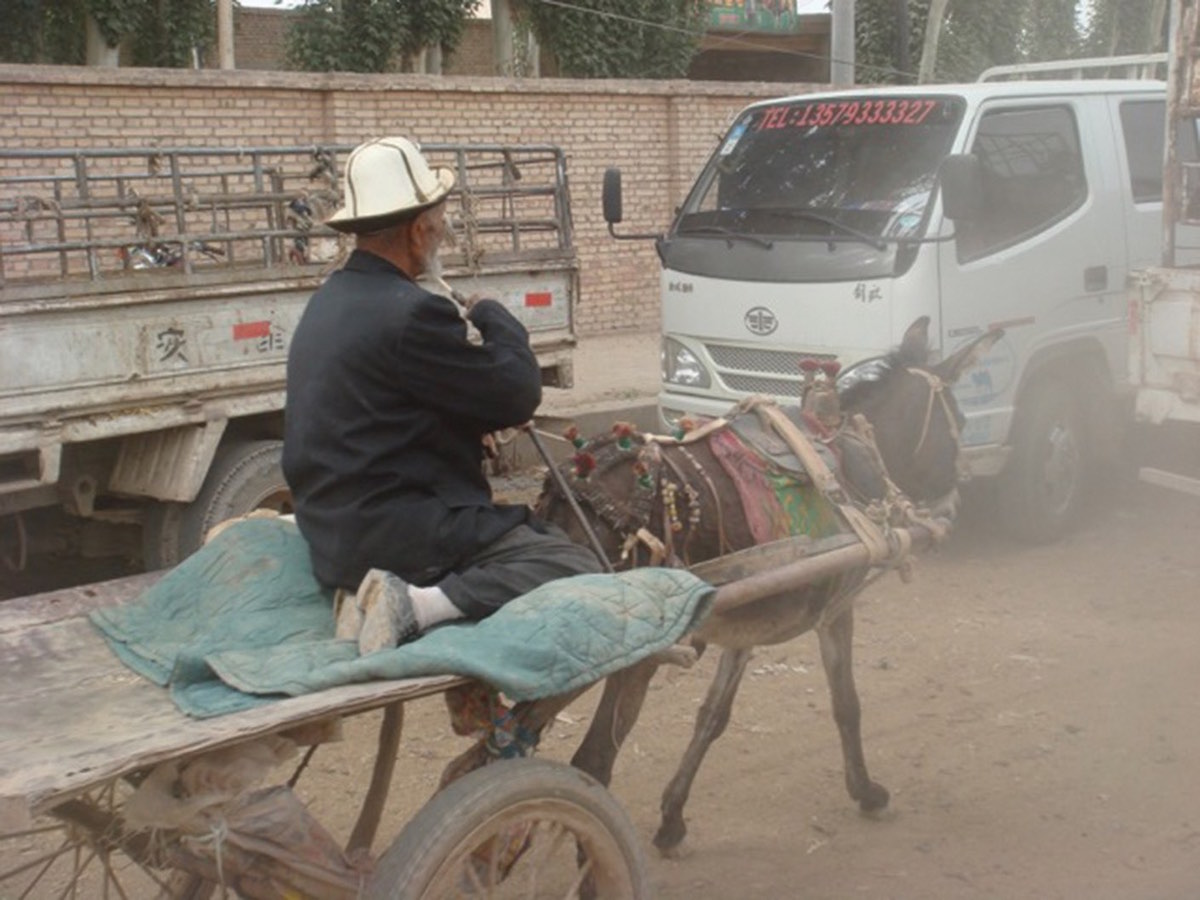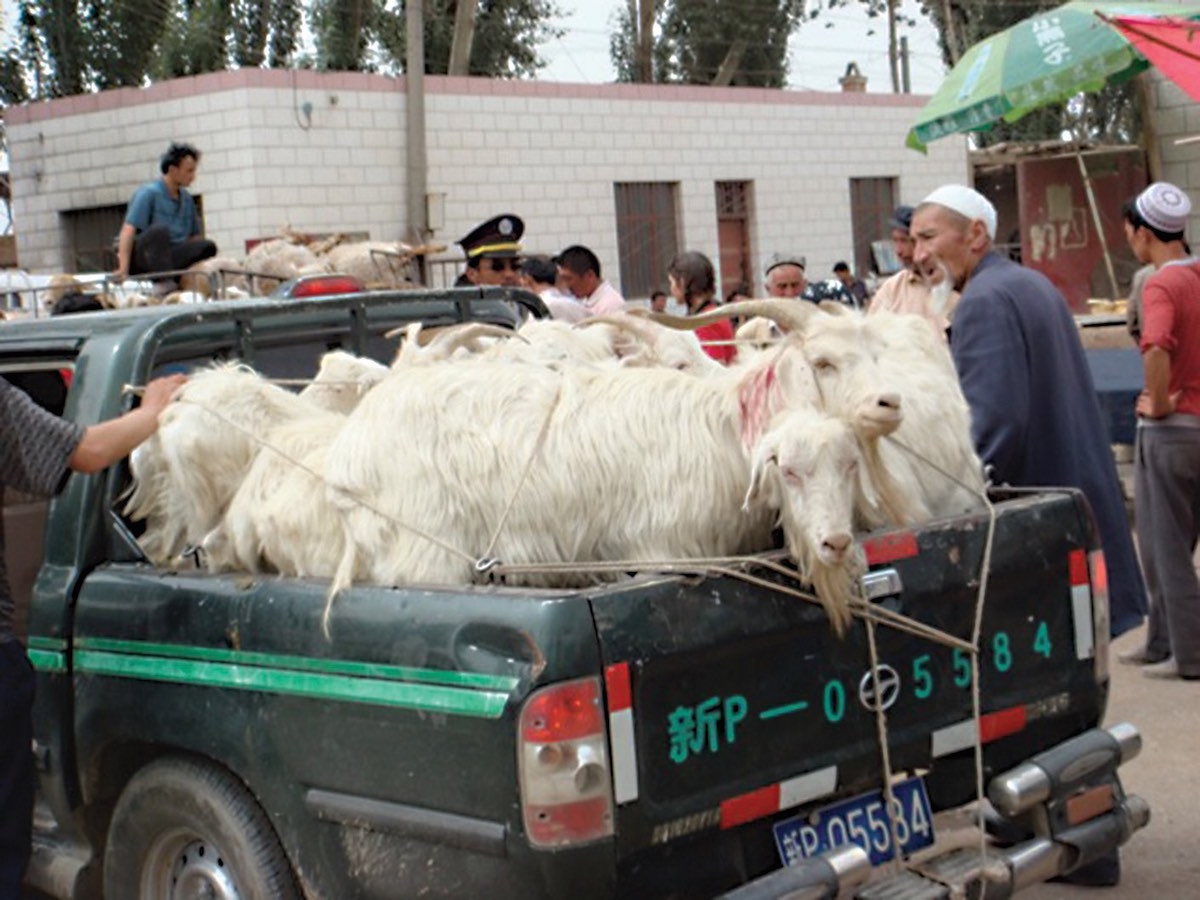In the United States, we are accustomed to thinking of draft animals as relics of the pre-combustion engine past or, at historic sites like Colonial Williamsburg, as nostalgic attractions.
But draft animals remain ubiquitous in other parts of the world as central participants in food economies, both as food products themselves and as power to move agricultural products from fields to markets.
In areas of the world where roads accommodate hooves better than wheels and the expertise to maintain and repair motorized vehicles is scarce, pack animals are the most economically efficient tool to move food products to the market to maximize profits for producers. Some draft animals are likely to be used as food once their ability to provide labor diminishes, thus filling in multiple links in the chain of food production, distribution and consumption.

Camels at the Birqash Camel Market outside Cairo, Egypt. Camels arrive on foot from the Sudan, live meat on the hoof. Thousands of camels head to market to be auctioned. Colorful markings indicate important market information — a kind of bar code for dromedaries.

In China’s Gobi desert, carts pulled by donkeys carry every sort of food imaginable, from fresh meat to wheat and other grasses. Crops are harvested by hand reaping; this woman is hustling off the morning’s wheat in the cool shadows of an olive grove.
This trend is relatively recent in some parts of the world. Animal power was introduced into subsistence agricultural systems across sub-Saharan Africa in just the last 100 years and facilitated a transition to commercial agriculture. In West Africa, for example, a 2005 regional report by agricultural scientists encouraged farm owners to incorporate more livestock power, or “animal traction,” into their farming practices to offset growing wage costs for human farm labor.

The livestock market outside Kashgar, China, sits on the ancient Silk Road. Donkeys and mules are bought and sold to transport other animals purchased for meat. The sure-footed animals can deliver food where no trucks or cars can pass.

Gradually, gas-powered vehicles are replacing the donkeys, able to take dozens of animals at one time from the market to local slaughterhouses.
Some parts of the world that primarily use draft animals for food transport are the same places that record the oldest evidence of livestock domestication. The American Museum of Natural History reports that cattle and equids were domesticated for draft use between 6,000 and 8,000 years ago in what is now Central Asia, Pakistan and the Middle East. According to the Food and Agriculture Organization (FAO) of the United Nations, traditional draft livestock systems in these regions now exist in parallel with a growing turn to industrial farming in today’s globalized economy.
The transition to industrial farming in the early 20th century in the U.S. and Europe replaced animal traction with tractors. But today, in regions that continue to use animal labor, the same transition may merit further consideration due to the role fossil fuels play in climate change. While this shift in attitude may stall transition from animal to engine in some parts of the world, the transition from animal to machine labor could still happen, but the machines may run on different fuels.

Author
Jeannette Vaught is an American Studies PhD who splits her time between Austin, TX and Long Beach, CA. Her veterinary background and interest in technology and culture inform her writing about animals, agriculture, food, and science. She produces the podcast "The Range" for Foodways Texas, and is working on Locust for Reaktion Books' Animal Series, when not lavishing carrots upon her aged horse.